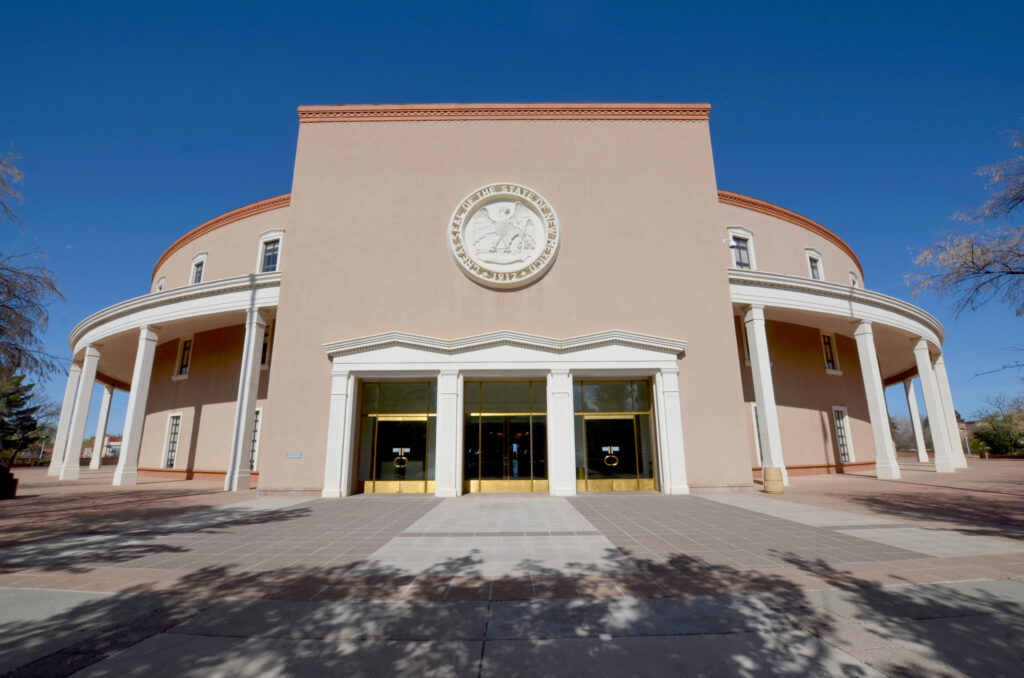Hydrogen Hub Development Act introduced in NM House of Representatives

Since New Mexico regulators released a discussion draft of the Hydrogen Hub Development Act in November, about a dozen companies have contacted the state about locating new hydrogen operations in various areas, according to New Mexico Environment Department Secretary James Kenney.
“I think that kind of speaks volumes in terms of how this could benefit our state,” he said.
Kenney spoke to NM Political Report via phone on Tuesday, following the introduction of the bill in the state House of Representatives. It is sponsored by Rep. Patricia Lundstrom, D-Gallup, who has already seen a large hydrogen project in her district, and Rep. Nathan Small, D-Las Cruces.
“This bill creates and protects good, family-supporting jobs for New Mexicans, while reducing emissions and addressing climate change, positioning our state as a leader in the just transition to a clean economy,” Lundstrom said in a press release. “We cannot turn back the clock on climate change, but we can use every tool at our disposal to slow it down and mitigate its impacts.”
The bill would create tax incentives and provides the option of developing regional hydrogen hubs through public-private partnerships. The tax incentives favor negative carbon intensity hydrogen. Kenney said this could be hydrogen created by methane that would otherwise be vented or flared, such as methane from landfills and decomposing agricultural waste. The bill would also establish a greenhouse gas emission limit for electric generating facilities that use hydrogen to produce power and are seeking tax incentives.
Hydrogen does have its drawbacks and, if done wrong, can increase emissions, critics say. The start of the legislative session was marked by protests, including a group interrupting the governor’s State of the State address to protest the proposed hydrogen incentives. A peer-reviewed report released last year found that hydrogen produced from natural gas methane can actually have higher emissions than if the natural gas was burned. The vast majority of hydrogen energy in the United States is produced from natural gas, in part because it is more affordable.
Groups like the Rio Grande Chapter of the Sierra Club are skeptical about hydrogen, although they acknowledge that hydrogen produced using renewable energy from non-fossil fuel sources could have some applications. However, a fact sheet released by the Sierra Club’s Rio Grande Chapter states that most of the projects proposed in New Mexico would “create significant climate and health damage — not reduce it.”
The bill would allow companies or government entities to apply to have a region designated as a hydrogen hub. These regions must have access to renewable energy or natural gas pipelines, natural gas generators or methane generators. If fossil fuels are used to generate the hydrogen, the carbon dioxide created in that process must be permanently sequestered. If it passes, the New Mexico Finance Authority would oversee a new hydrogen hub project fund, which will provide grants and loans. Projects located within the hubs will be eligible for greater tax incentives.
The Sierra Club’s fact sheet also casts some doubt on sequestering carbon in the state. The U.S. Environmental Protection Agency classifies types of injection wells. The ideal well to inject carbon for storage is called a class six well. There are not currently any class six wells in New Mexico, although there are studies looking at drilling them. One such study that received funding from the federal government is looking at the potential of storing carbon underground near the San Juan Generating Station. This came after a proposal to retrofit the coal-fired power plant with carbon capture technology.
Critics of the proposals to grow a hydrogen economy in the state further say that some of the uses that the bill allows for hydrogen, such as electricity generation, are better done with renewable energy sources like solar and wind.
The Hydrogen Hub Development Act is one of the governor’s priorities going into this Legislative session.
“The governor’s asking for transformative legislation,” Kenney said.
He said some of the legislation she is backing include crime and social security legislation.
“A transformative moment with respect to our economy and climate is hydrogen,” he said.
Kenney describes hydrogen as a key component of meeting decarbonization goals and said the economic benefits would be seen throughout the state. For example, Kenney said companies have expressed interest in eastern New Mexico where there is a lot of dairy production. The waste, such as manure, from the dairy farms breaks down into methane. Methane is a compound of one carbon atom and four hydrogen atoms. Using renewable energy like wind and solar, the methane from the manure can be separated into carbon and hydrogen. The hydrogen would then be put to use in various sectors, possibly even in packaging of dairy products like cheeses, while the carbon would be captured and either sequestered underground or put to beneficial use.
Hydrogen is already in New Mexico, Kenney said, adding that there are federal incentives to bolster the hydrogen economy. The state incentives included in the Hydrogen Hub Development Act are intended to build upon those federal incentives, he said.
The Escalante Power Plant, which was originally a coal-fired generating station, is being converted to a hydrogen generating station using natural gas. This power plant is located in Lundstrom’s district. Meanwhile, New Mexico companies like BayoTech and PESCO have teamed up to produce small hydrogen generators.
Hydrogen can also be used to decarbonize the transportation sector, but Kenney said that incentivizing hydrogen does not mean that NMED is wavering on its rapid expansion of electric vehicle charging infrastructure. He said it is hard to electrify some areas of transportation including heavy machinery, trains and tractor trailers. In terms of transportation, the bill outlines what types of vehicles are eligible for hydrogen incentives. This includes buses, commercial motor vehicles, off-highway motor vehicles, trains, recreational vehicles, road tractors, school buses, special mobile equipment, tank vehicles and trucks or truck tractors.
The national labs in New Mexico have decades of experience researching and developing hydrogen technologies. Earlier this month, they signed a memorandum of understanding with state agencies for research and development.
The hydrogen economy could help the state diversify its revenue, especially as decarbonization efforts will reduce demand for oil and gas, which make up the backbone of New Mexico’s economy.
Kenney said the companies interested in locating in New Mexico would each bring hundreds of high paying jobs and, should the bill not pass, those companies will take those jobs elsewhere.
This article was originally posted on Hydrogen Hub Development Act introduced in NM House of Representatives







